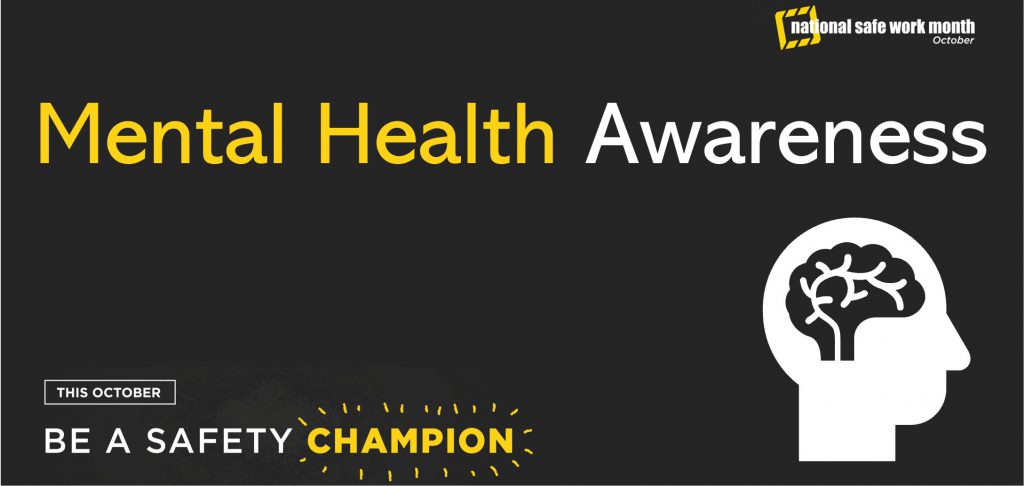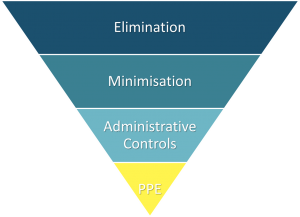World Mental Health Day – Be a mental health safety champion

World Mental Health Day 2019, coinciding with National Safe Work Month in Australia. The theme of this year’s World Mental Health Day is “Do You See What I See?” which aims to challenge perceptions on mental health and encourage us to look at mental health in a more positive light.
Work-related mental health conditions (psychological injuries) make up approximately 6% of all workers compensation claims, equal to the number of claims associated with vehicle incidents. More than $543million has been paid in workers compensation claims as a result of psychological injury. Demonstrating the severity and significant of mental health conditions within our workplaces.
A number of hazards are recognised as adversely affecting mental health of workers, these include:
- Violent or traumatic events
- Isolated work
- Poor organisational and environmental conditions
- Poor organisational change management
- High job demand
- Low job demand
- Bullying
- Poor support and workplace relationships, and
- Low role clarity.
91% of psychological injury workers compensations claims are related to workplace stress, which is triggered by the above hazards. Work pressure is recognised as being the primary mechanism for causing mental stress, contributing to more than 31% of workers compensation claims.
Beyond workers compensation claims, mental stress and psychological injuries have been linked to high levels of unplanned absences, staff turnover, withdrawal and presenteeism as well as poor work quality.
It is clear maintaining staff mental health is beneficial to both the individuals and the organisation. The hierarchy of controls can be applied to assist in controlling the risks associated with psychological injuries.
- Eliminating the hazard
Where reasonably practicable eliminate the risk by eliminating excessive work demands by setting achievable workloads and performance targets.
- Minimising the Risk
Reduce the severity or likelihood of the risk occurring, this includes substituting or isolating the hazard. Examples of minimising the risk include:
- Allowing longer for inexperienced staff to complete tasks
- Matching resourcing to the task at hand
- Clearly defining worker roles, responsibilities and expectations
- Providing workers control over their time management
- Consulting with workers about organisational change, and
- Increase lighting in work areas.
- Administrative Controls
Administrative controls are elements that are included in your procedures and standard operating procedures. They outline the reasonable expectations for workplace behaviour and provide guidance on the management of staff, managers and clients. Examples of administrative controls may include:
- Use job rotation for repetitive or highly demanding tasks
- Have clear expectations and tolerances for workplace bullying and sexual harassment
- Ensure workers have adequate tools, resources and information to complete their tasks
- Consult and train workers prior to organisational change coming into effect, and
- Train workers to recognise warning signs of psychological injury and mental stress.
- Personal Protective Equipment (PPE)
PPE is considered a last resort and should be used when higher order controls are insufficient or not reasonably practicable. Examples may include:
- Personal duress alarms, and
- Hearing protection or headphone to protect workers from stress related to excessive noise
Find out more about World Mental Health Day here https://1010.org.au/
If you or someone you know is struggling the following resources may help
Lifeline – 13 11 14
SANE Australia – 1800 187 263
Beyond Blue – 1300 224 636